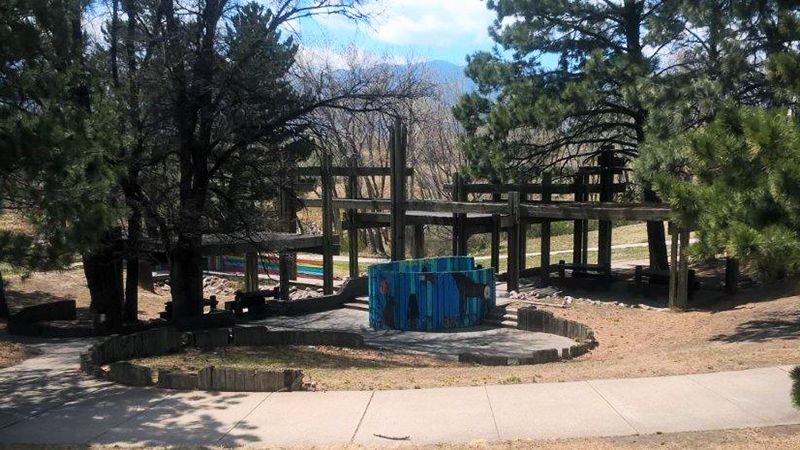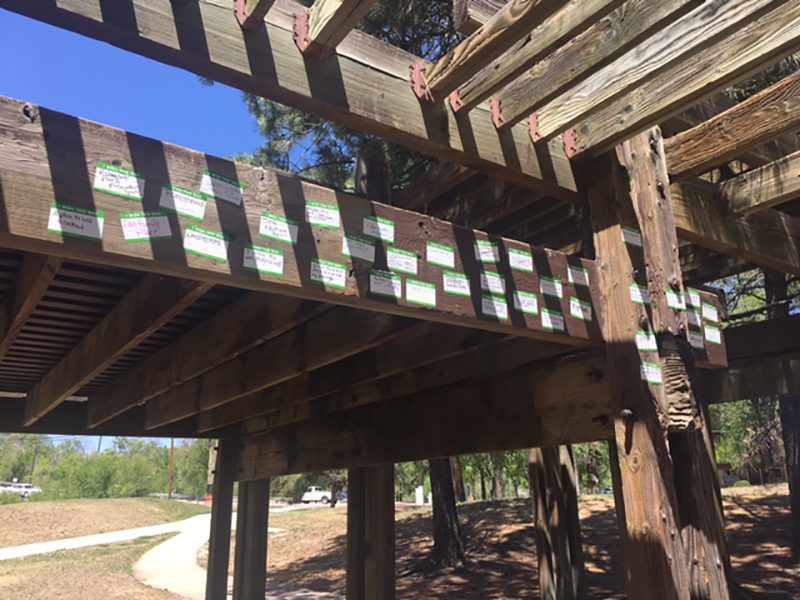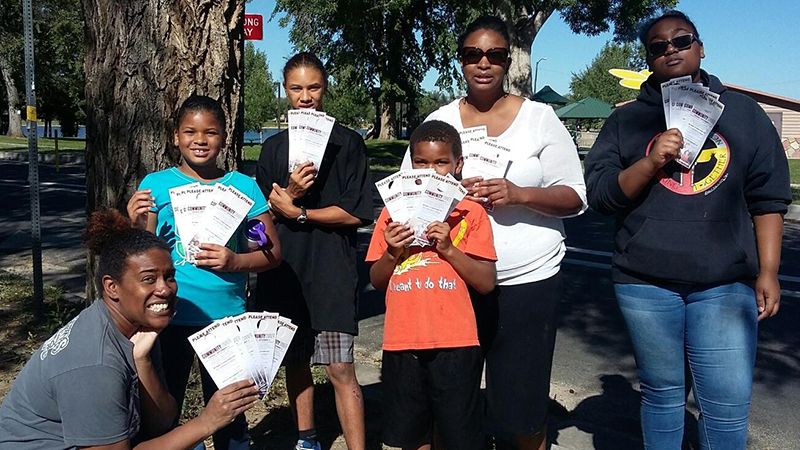Sometimes When We Lose, We Win
Leer en español
The Leon Young Pavilion in the Hillside neighborhood of Colorado Springs. Photo by Victoria Stone
By Mia Ramirez
The Colorado Trust’s Community Partnerships strategy relies on Coloradans in towns and neighborhoods across the state to identify the biggest challenges—and solutions—in their own communities. In many of these places, the mere act of getting together has strengthened communities’ ability to take on challenges directly. Mia Ramirez, The Trust’s community partner working in the Colorado Springs neighborhood of Hillside, describes how the community came out stronger in a fight for a neighborhood park pavilion—even though it was unsuccessful in the short term.
It was a typical Monday morning at the office earlier this month. I was settling in, sipping coffee and reading email. I opened a message from our contact at the City of Colorado Springs’ Community Development Division (CDD) and nearly spit out my coffee when I read the following sentence:
“As of July 2018, the community and Parks [Department] are at odds about whether any new structures should be at the site of Leon Young, making the meeting of our expenditure deadline unlikely, so CDD has to reassign the $150,000 in Public Facilities funds to a shovel-ready project.”
“Reassign” funds?
“Shovel-ready”?
I felt a knot form in my throat as I read these words. How would I relay the message to the Hillside neighborhood of Colorado Springs—youth, adolescents, newcomers, generational residents, seniors and the many partners who have worked together to support the revitalization of the Leon Young Pavilion?
The Leon Young Pavilion was constructed in 1976 to honor the legacy of our city’s first black mayor and vice mayor. Young, also a Hillside resident, was a leader ahead of his time who rose to power and yet remained deeply rooted in his community.
The pavilion is in a neighborhood park located on the southwest corner of Fountain Boulevard and South Corona Street in Hillside. The park does not look like other parks named after other prominent city leaders. The grass is not as manicured as in Nancy Lewis Park, and doesn’t benefit from city funding in the same way as John Venezia Park. However, the Leon Young Pavilion is loved, and groups of all ages have been working for over a year to revitalize this picnic area.
The City’s Department of Parks, Recreation and Cultural Services opposed the neighborhood’s effort to revitalize the pavilion from the start, saying among other things that it would cost too much to maintain. Still, it was difficult to believe that they would walk away from a $150,000 investment, the opportunity for private-public partnership and, more importantly, the opportunity to invest in a neighborhood park.
Reading that email, I felt the same grief and anger that come from experiencing loss. My first thought was, “Hillside lost!”
Hillside community members had spent much of the past year organizing around the pavilion. They had canvassed the neighborhood. They held meetings with a Parks Department representative, where they advocated for that space. Importantly, they had also spent time visioning: They had worked together to reimagine what a new pavilion could look like and, moreover, what it would mean for the community.

Community members in the Hillside neighborhood of Colorado Springs wrote down their visions for the future of the Leon Young Pavilion—and placed the results on the pavilion itself. Photo by Mia Ramirez
Later that day, I shared the news with Hillside community members. Some cried, some were angry, some were affirmed in their skepticism that the Parks Department would listen to them, and others were speechless. This is what loss looks and feels like.
Now that a few weeks have passed, I’ve experienced a new emotion. I am overcome with joy. While the community has lost their grant, they have gained in so many other ways. To my neighborhood friends and partners: I know it doesn’t feel like it now, but the neighborhood has truly won.
Hillside has succeeded. The neighborhood modeled what it looks like when youth voices are elevated, and are given the power to critically evaluate their environment. The Hillside community is a leader in this space and truly knows how to support youth advocacy. This will serve them long into the future.
By getting together to advocate for the pavilion, Hillside modeled the power of community organizing and demonstrated that this can be a powerful tool for any neighborhood in our city—not just ones like the Old North End or the Broadmoor. Hillside advocated for a $150,000 grant, and the city’s Community Development Division responded in January by allocating this funding to the pavilion’s revitalization. This is a huge achievement, even if the money didn’t materialize.
While fighting for the park, Hillside invested the time and energy to build a network with traditional power holders and elected officials. The community invited El Paso County Commissioner Longinos Gonzalez and State Representative Tony Exum to participate in its block party, and cast their votes in a “dotmocracy” poll to revitalize the Leon Young Pavilion. Community members spent hours working with the CDD and tried to build consensus in meetings with the Parks Department. A Hillside resident provided testimony at City Council, and community members reached out to their council representative. The relationships not only brought visibility to the pavilion issue, but also served as a reminder that the Hillside neighborhood is a powerful constituency.
Hillside is building its base. Even as the Parks Department’s opposition solidified, community members knocked on doors, hosted meetings and collected numerous letters of support from nonprofit providers, private foundations and churches, all of whom rallied around the neighborhood’s vision. Several residents also wrote letters on everything from computers to notepads they had on their kitchen counters. Hillside now has a base to call upon for future actions. This is power-building, and Hillside has done it well.
And the work continues. Hillside residents are calling in their base to help agitate the decision-makers, and make them aware that the losses extend far beyond the $150,000 grant award. Hillside is holding leaders accountable to the Parks Master Plan and PlanCOS—both plans which prioritize neighborhoods.

Hillside community members distributed invitations to a neighborhood meeting to discuss the future of the Leon Young Pavilion. Photo by Victoria Gallegos
Last but perhaps most importantly, Hillside is blazing the trail for health equity in Colorado Springs.
The community members intentionally worked to build and share power, and centered the people most affected by the city’s decisions. They are working to ensure our city’s legacy is not left behind. The Leon Young Pavilion is more than a picnic facility, more than a neighborhood park—it is a tribute and a testament to the fact that black men, and people of color, have made incredible contributions to our city and have shaped our future for the better.
The knot in my throat is long gone, and I am now filled with the giddiness and anticipation for a future full of possibilities. Thank you, Hillside community, for your leadership, passion and commitment to health equity.

